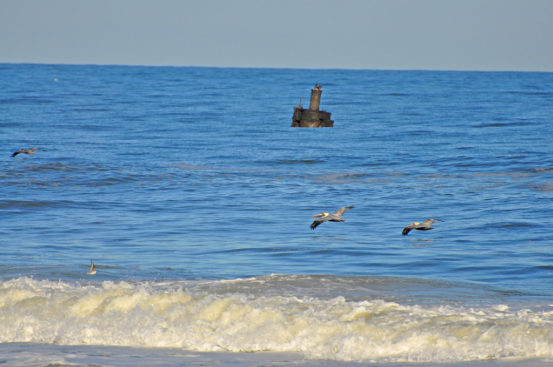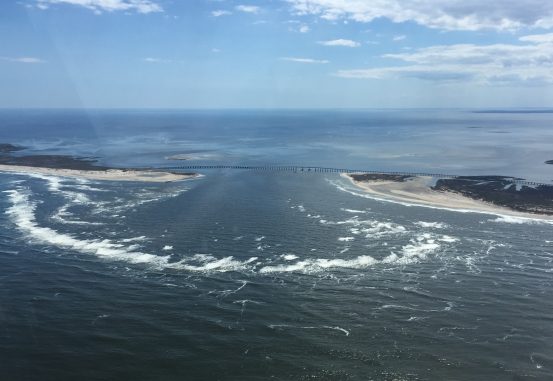We may never know what caused the Outer Banks shipwreck, the Oriental, to run aground in May of 1862. But the Delaware County (PA) American, citing US Army Lieutenant S. Morton, “of this county,” claimed the ship’s pilot fell asleep on his watch. “The cause of the accident we understand from Lieut. Morton, is attributed to the pilot sleeping at his post,” the paper reported.
Other sources point to the possibility of a faulty compass causing the shipwreck. The Oriental was a steel-hulled ship and their effect on a magnetic compass could be significant. Common practice was to find an object that was true north and then calculate the deviation of the ship’s compass. Ship Captain Benjamin J. Tuzo was not convinced the calculations were accurate. “I wish they had left my compass alone,” he was reported to have said. He was particularly concerned that the calculations would run the ship too far west and into the Outer Banks shoreline.
Whether a faulty compass setting or a sleeping pilot, at 11:55 on the night of May 16, 1862, the Oriental ran aground the Outer Banks off Pea Island and would never float again.

The ship was barely a year old when she foundered. At a little over 200’ and rated for 1200 tons, she included some of the latest technology. Steel-hulled, she was pushed through the water by a steam driven screw propeller, far more efficient than paddle wheels. Typical of the steamships of the day, the Oriental was schooner rigged with two masts.
When launched for the Nuevitas and Cuba Steamship Company, the ship was supposed to sail between Havana and US ports, taking cargo to Cuba and bringing sugar back.
The Civil War intervened, and the United States government, desperate to build up its navy, requisitioned hundreds of ships into its service. The Oriental was one of the largest and most advanced and the Government paid generously for its use. Some sources point to a $1000/day leasing fee for the ship and crew. That would be a little more than $25,000 in modern dollars.
When the Navy took possession of the ship, they quickly converted the ship to a troop carrier but kept some of its ability to haul cargo.
The first mission was to Fort Zachary Taylor at Key West.
Largely populated by New Englanders and Bahamians, and with a well-garrisoned Union fort protecting the harbor, Key West was an outlier in the Confederacy. The city itself never joined in the rebellion, and there was very little sympathy for it.
On its second run, the Oriental left New York with the morning tide on May 15 bound for Port Royal, South Carolina. Union forces had recently taken Port Royal, and the Orient passengers included personnel who would help freed slaves integrate into civilian life. On board was Brigadier General Rufus Saxton, Army quartermaster whose specialty was recruiting recently freed African American slaves into the Union Army.
The ship was also carrying considerable amounts of supplies and ammunition as well as 30,000 letters to servicemen.
Making good time out of New York, the ship steamed parallel to the coast, riding the Labrador Current south. As Oregon Inlet was passed, however, the seas were rough and the wind high, according to eyewitnesses, although the Delaware County American reported “… the night was clear and moonlight.”
At 11:55 p.m. the Oriental ran aground.

Initially there was hope she could be refloated and the Delaware County American wrote that, “There were thrown overboard 100 tons of hay, 1000 boxes of hard bread, 10,000 bushels of oats, and 200 boxes of cartridges.”
All attempts failed, though, and finally the ship was abandoned.
Unlike many of the Outer Banks shipwrecks, there was no loss of life. Union forces had recently taken Ocracoke and Hatteras Village and the navy was very active in the area. All ship’s personnel were safely evacuated to other ships.
Evidence of the shipwreck is still easily seen. About 150 yards offshore, directly across from the Pea Island Visitors Center, the Oriental’s boiler still rises above the waves of the Atlantic Ocean.
